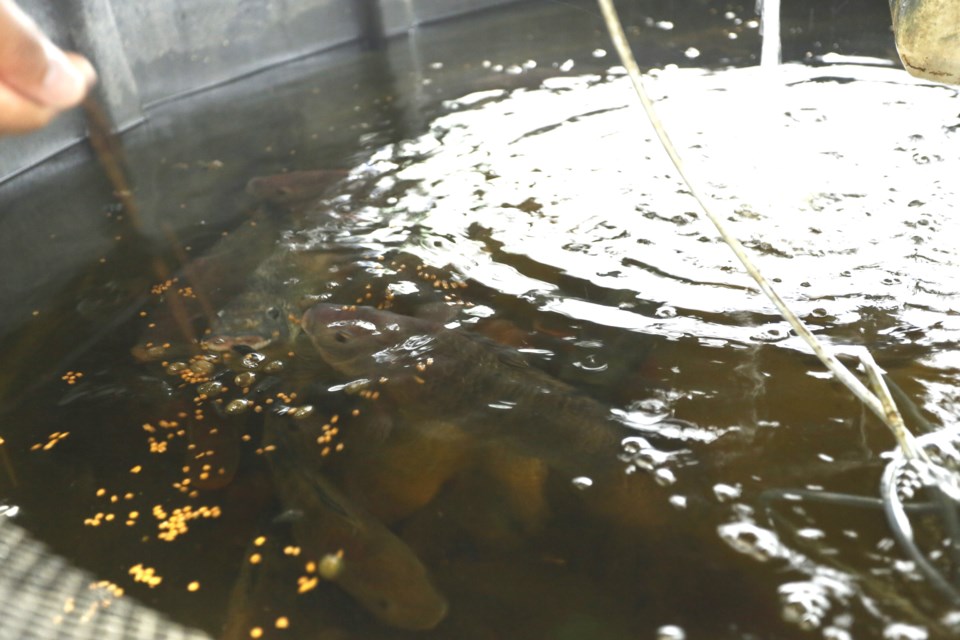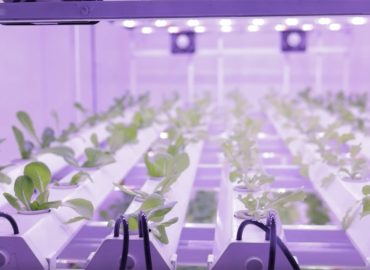Country Heritage Park Hydroponics
Country Heritage Park’s hydroponic farming a lifeline for many
Initiative supporting various food programs across the region
Country Heritage Park Hydroponics | Mansoor Tanweer |
IMAGE: Juan Jose Lloren maintains the aquaponic plants.Mansoor Tanweer/HaltonHillsToday
An an increasingly precarious food environment, salvation appears to be coming from an unexpected place.
Milton’s Country Heritage Park (CHP) began implementing a hydroponics and aquaponics operation about a year ago. Since then, several organizations across Halton have directly benefited from the food grown in this ultra-efficient method.
This may come as a surprise to some. On the surface, CHP appears to be a rustic getaway for booking weddings and catching rodeos. But CEO Jamie Reaume conceived of the idea to experiment with the technique to actively benefit the community.

“One of the most difficult things to do is finding new methods to old realities. Growing food has always been something that is an old method where [farmers] put the seed in the ground and wait for Mother Nature,” Reaume said.
Hydroponics and aquaponics are similar methods but differ in some crucial ways. Hydroponic agriculture involves growing food plants suspended in water. No soil is involved in the process.
Aquaponic farming appears complicated, but is in reality elegantly simple. Fecal matter of fish like tilapia is captured. Two different types of bacteria work in tandem to convert the ammonia into nitrite, essentially food for plants. Hydroponically grown plants then absorb the nitrite, creating healthy plants and higher yields.
Both methods are generally more efficient than traditional soil-based farming. Food is grown in a closed-loop system, meaning water is circulated and recycled throughout the apparatus.
“We use 80 or 95 per cent less water than traditional growing methods,” farmhand Juan Jose Lloren told HaltonHillsToday. “You actually get faster growth speeds and larger plants.”
The system does not need a whole lot of space either, as growing operations and their equipment can simply be stacked higher and higher instead of sprawling out like soil crop.
This level of efficiency has allowed the operation to support several projects and organizations both on the CHP property and elsewhere. Weekly harvested yields feed children relying on Food4Kids and bulk up the shelves of Food for Life Halton’s Wednesday market, which has a regional hub at CHP.
They provide ingredients to the Dream Kitchen project, where individuals with special needs learn to cook. The Toronto Black Farmers and Growers Collective also benefits from the project.
Despite the promise of cultivating plants in CHP’s chosen method, several kinks still need to be ironed out. The aquaponics operation is not quite a closed-loop system yet. The fish in the tanks still need to be hand-fed — an area of inefficiency that Lloren is working on a solution to.
“Which is why we’re using meal worms to supplement that, meaning that instead of having to feed the fish [by hand], we only give them meal worms as scraps,” Lorren explained in speaking about the last step to create a truly closed loop system.
This alludes to the ongoing process of experimentation, creating efficiencies and employing new methods. Volunteer and high schooler Lucy Herman’s ideas have been implemented to that end.
Herman noticed that a way of doing things was causing issues with ventilation, so she stepped up and made some necessary changes.
“So I went up and started moving things around to see if we can improve ventilation. It ended up working really well,” Herman said.
She added: “We also had a bit of an issue with spacing. [The plants] were getting a little too big, so we had to figure out how to organize so they weren’t squishing each other.”
As there are a finite amount of nutrients in a system, whether water or soil-based, there may not be enough of them for all the plants, thus choking each other out.
He believes that “regardless of how you look at things, we still have to find a way to feed people. You should not go hungry in a first-world, G7 country.”
“A smaller plant is going to wither and we don’t want that,” Herman explained.
The experimentation continues in a sea container behind the operation, where tiered gardens under LED lights act as a laboratory for finding new ways of doing things.
“We’ve experimented with doing a mixed substrate, so that means even using soil in an aquaponics system,” Lloren said in providing an example.
While several organizations are deriving immense benefits from these unique forms of agriculture, barriers to optimization still remain. Though scaling up an operation is relatively easy, energy sources, money and awareness still elude projects like this.
Along with the would-be laboratory in the sea container, CHP is looking into using solar panels to generate electricity for the operations. They may also employ things like the nutrient film technique in order to use far less water.
The hydroponics and aquaponics operation is just one project in a large ecosystem of groups at CHP. Several first responder organizations like the Halton Regional Police Service, OPP and the RCMP train on the grounds. Community Living North Halton, the Kinsmen and Optimist Clubs of Milton are there as well.
Indigenous group Grandmother’s Voice is working on a farm using traditional methods at the CHP. Several farmers’ organizations like the Halton Federation of Agriculture, Halton Soil and Crop Improvement Association and the Golden Horshoe Food and Farming Alliance and Zawadi Farms also share the space.
Last but not least, the Milton Film Festival and the Fine Arts Society also have a home at CHP.
Original Article: https://www.haltonhillstoday.ca/local-news/country-heritage-parks-hydroponic-farming-a-lifeline-for-many-9210257
The post Country Heritage Park Hydroponics appeared first on GROZINE.


